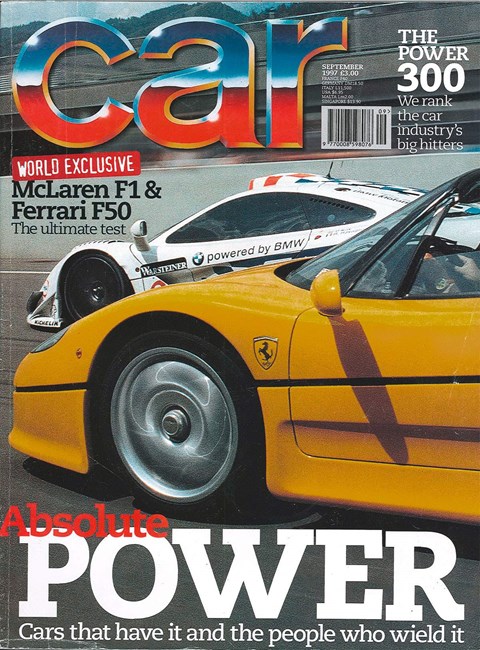► The editor’s welcome letter, September 2015
► Phil’s embarrassing Bentley blow-out
► Britain’s crumbling road networks: how to fix it
It takes something abrupt to shatter the serenity of Bentley’s Flying Spur, the equivalent of a streaker rampaging through the RAC Club. The V8’s effortless torque was wafting us along the A36 away from Bath, barely a whistle of wind or rumble of tyre at 50mph when BANG! The nearside wheel dropped like an anvil into a pothole. It sounded bad, it felt bad, it was bad: the force had fired the centre cap from the wheel like a torpedo from a tube, and forced a pocket of air into the tyre’s sidewall.
It turned out sourcing a 275/35 ZR21 Pirelli P Zero on the Somerset/Wiltshire border was not the work of a moment. So with spacesaver fitted, I limped the 116 miles home. The red rim looked like a baboon’s backside, which was how I felt trundling along the motorway at 50mph, itching to push an express capable of 183mph. The following Monday I took another 50mph detour to Bentley Cambridge, where the engineers fitted a new tyre, and assessed the Spur for damage (there wasn’t any). But the cost was around £300 for replacement rubber, and more than two hours lost from the working day.
‘One in six of English and Welsh roads are classified as in a poor condition’
Jaguar Land Rover reckons the annual cost in repairs, compensation and lost productivity is £2.8 billion annually. Britian’s roads are crumbling. The Asphalt Industry Alliance (AIA) tracks their condition every year, and its ALARM survey has typically lived up to its name. One in six of English and Welsh roads are classified as in a poor condition, with record rainfall washing away the substructure. Last year, local authorities spent 25% of their budget on reactively filling some 2.67 million potholes. Roads are ideally resurfaced every 10 to 20 years, but the average for principal English roads outside London is 36 years. A good surface is vital to provide grip for braking, and to seal the road from harsh weather.
What’s surprising is that the roads are actually getting better (even if compensation payments are increasing). Despite the Government’s austerity agenda, it has recognised that road investment is critical to the nation’s prosperity. £6 billion is being pumped into local road maintenance between now and 2021, although the AIA claims that’s only enough for local authorities to keep pace with local repairs.
Chancellor George Osborne has a plan to continue the funding after 2020-21: vehicle excise duty will revert to its raison d’être pre-1937 – to fund the roads. It’s welcome news that all revenue raised from English VED will be invested in the strategic road network. Not before time. And CAR readers will be contributing their share: from 2017, road tax on cars listed above £40,000 will incur a £310 surcharge for the first five years, on top of the standard £140 rate affecting every other motor (bar zero-emission vehicles). Moving away from a road tax system based on CO2 emissions will help the Government protect its road fund revenues. Good job: the economy – and enthusiasts – are crying out for roads to be treated as the vital resource they are.
As for this issue, it was a thrill to pore over our 25 British icons at the cover shoot. They’re the team’s Brit bucket list – I hope you enjoy our tales of driving them.
This month in history: September 1997 
McLaren F1 and Ferrari F50
The ‘90s supercar icons clashed in CAR’s ‘Absolute Power’ issue. McLaren’s long-tail GTR doubled for the F1 ‘road’ car in the photos, to prevent any repercussions from this forbidden test. The F50 felt like a giant kart, its engine ‘a self-fulfilling prophecy’, goading you to higher revs. But the F1 had superior steering, more refinement and a V12 deemed ‘the greatest road engine ever’. Read our McLaren F1 and P1 stories here.
Also in that issue
- F50 popped up again, in a power-fest with Bentley’s Turbo RT and the Viper GTS
- Top 300 industry execs listed: Ford’s Massimo Ghenzer (me neither) last, GM’s Jack Smith number 1.
- Owners of ugly cars including Austin Princess, Morris Marina and Opel Monza extolled their virtues